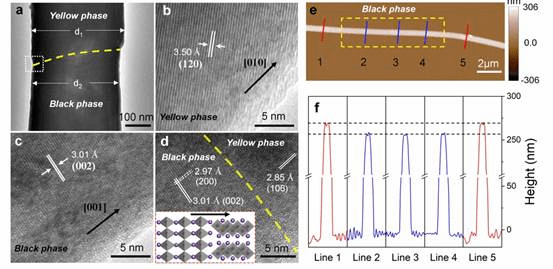
Recently, Yang Yiming's Research Group from School of Microelectronics, Dalian University of Technology, published their research result “Anion-exchange Driven Phase Transition in CsPbI3Nanowires for Fabricating Epitaxial Perovskite Heterojunctions”in the form of an academic paper on the international top journal Advanced Materials. The result was highly regarded by the editor as “These findings advance the emerging area of epitaxial halide perovskite research”.

Led by professor Yang Yiming, Li Jing and Xu Jiao contributed equally to this work. This work was financially supported by the National Natural Science Foundation of China (Grant Nos. 11804042, 62004022, and 12074054).
Abstract:
Anion-exchange in halide perovskites provides a unique pathway of bandgap engineering for fabricating heterojunctions in low-cost photovoltaics and optoelectronics. However, it remains challenging to achieve robust and sharp perovskite heterojunctions, due to the spontaneous anion interdiffusion across the heterojunction in 3D perovskites. Here, it is shown that the anionic behavior in 1D perovskites is fundamentally different, that the anion exchange can readily drive an indirect-to-direct bandgap phase transition in CsPbI3 nanowires (NWs) and greatly lower the phase transition temperature. In addition, the heterojunction created by phase transition is epitaxial in nature, and its chemical composition can be precisely controlled upon postannealing. Further study of the phase transition dynamics reveals a threshold-dominating anion exchange mechanism in these 1D NWs rather than the gradient-dominating mechanism in 3D systems. The results provide important insights into the ionic behavior in halide perovskites, which is beneficial for applications in solar cells, light-emitting diodes (LEDs), and other semiconductor devices.